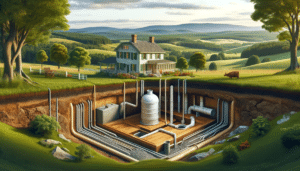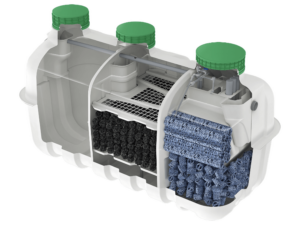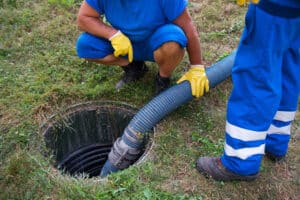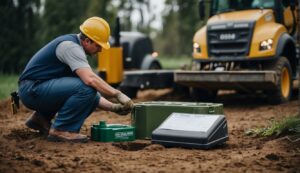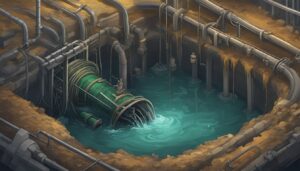The average person flushes their toilet five times a day. An entire household of four people may flush their toilet 20 times or more in a single day. But where does the waste go? If you have a septic system, there’s a lot that happens on your property each time you flush.
What Happens When I Flush My Toilet?
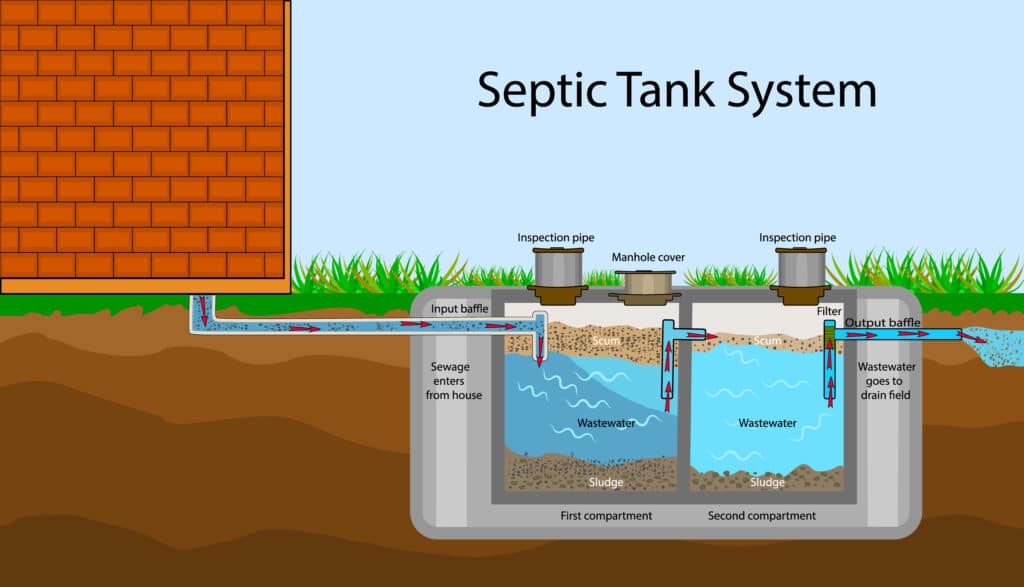
When you flush a toilet, the following occurs:
- The water and waste (black water) flow through your home’s plumbing system and into your main drain line
- The main drain leads outside to your home’s septic tank
- The black water enters the first holding tank
- Solids begin to settle to the bottom of the tank where they form a sludge layer
- The sludge is slowly broken down by bacterial processes
- Materials that float in water like fats, greases, and oils rise to the top to form the scum layer
- The remaining water, or effluent starts making it’s way toward the second holding tank where further separation of scum and sludge occurs
- The remaining effluent is directed into a leach field where it is allowed to make it’s way back into the ground
- The soil naturally filters out remaining contaminants from the water as it makes it’s way back down into the water table
This all sounds great in theory, but we all know that reality rarely works the way we want it to.
Concerns for your water table arise because of the leaching process. While the drainfield is purposely designed to allow the wastewater to make it’s way back into the water table, this design relies on that process taking long enough to properly filter the contaminants out of the water.
However, the placement of many of these systems too close to our waterways and estuaries means many residents in Long Island are using systems that constantly pump nitrates into our groundwater and coastal waterways, which is a major concern that all residents should know about and try to correct.
The Problem with Septic Systems and Cesspools in Long Island
One of the biggest issues with septic systems and cesspools in Long Island is that we are surrounded by water, and our lovely waterfront homes have older systems that aren’t designed to prevent nitrogen/nitrates from entering coastal waterways, as described above.
When the water table is high, septic systems become more problematic. For septic systems to function properly, there must be enough distance between the ground water and the leach field for the soil to do it’s work and remove nitrates and other contaminants.
However, septic systems along Long Island’s low-lying coast are considered to be “failing” if the ground water is close to the leaching pit. These systems can easily fail when storms submerge septic systems or cause the water table to rise.
When septic systems fail, nitrogen and other pathogens are released in high numbers, posing a threat to human health.
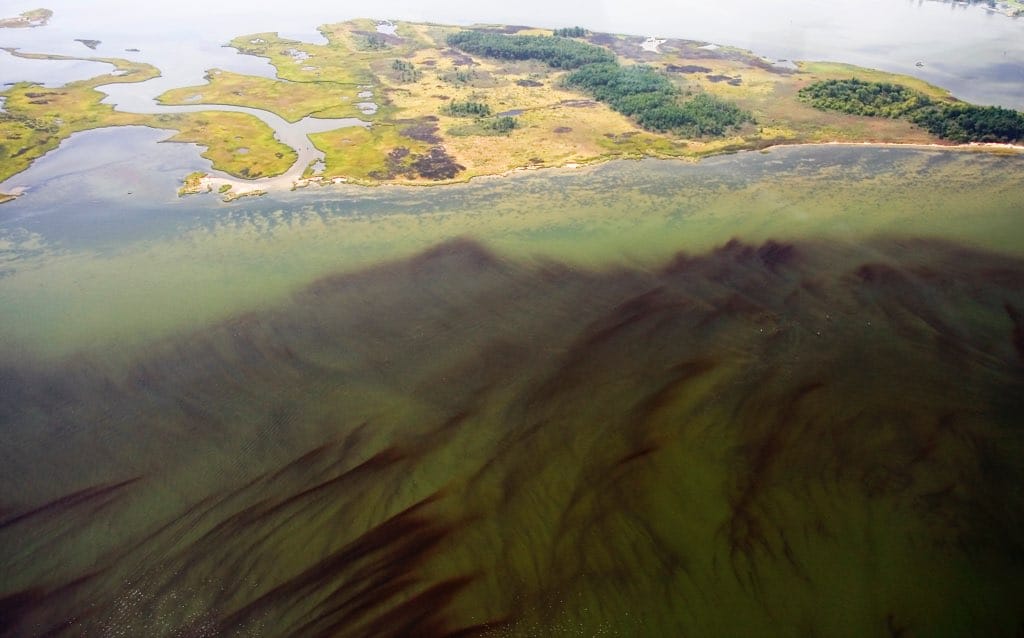
Problems such as rust tides, brown tides, and other harmful algal blooms occur when the level of nitrogen in our waterways rises too high. These algal blooms have far-reaching health, ecological, and economic effects that do a lot more harm than most people realize.
Alternatives to Traditional Septic Systems
Wastewater technology has advanced considerably over the last few decades. Modern systems can combine onsite and offsite wastewater treatment, which feeds waste to nearby treatment plants. These systems can be for individual homes or small clusters of homes in a neighborhood.
Individual on-site systems have also advanced. Many manufacturers now offer nitrogen reducing septic systems to help reduce nitrate contamination. Other solutions use shallow drain fields and simple materials, like wood chips or sawdust, to take advantage of natural bacteria that are capable of removing up to 90% of reactive nitrogen.
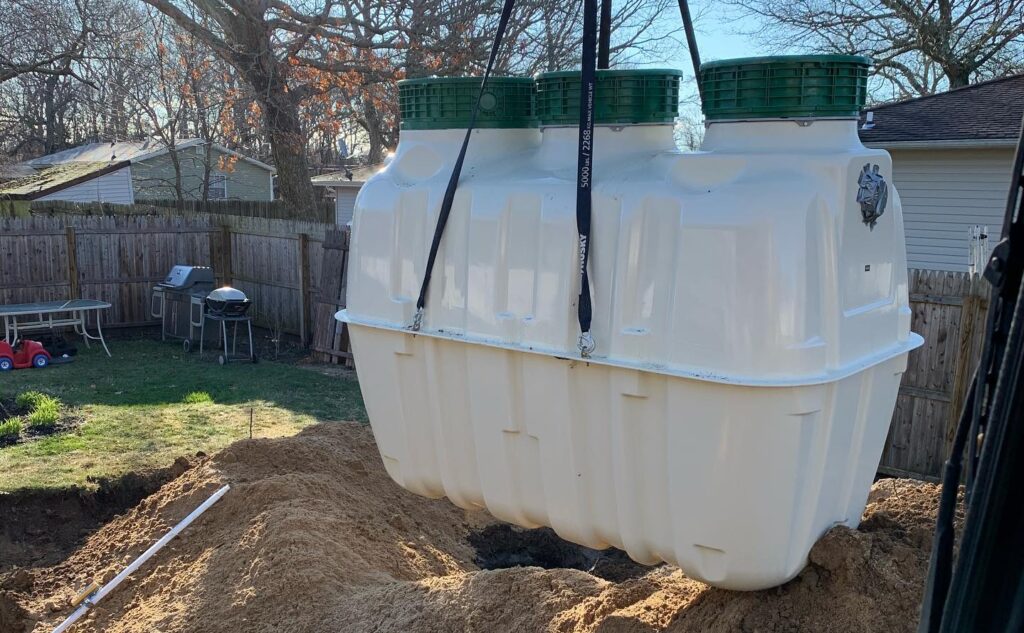
The good news is that homeowners in New York and on Long Island with failing septic systems or cesspools can take advantage of these modern wastewater treatment systems to reduce their environmental impact and protect local water sources at little to potentially no cost.
Because these older systems are creating large, far reaching problems, there are a number of grant and rebate programs available to help defray or even eliminate the cost to the homeowner entirely.
Working with a reputable partner like Bridgewater Environmental can help you make sure you get every dollar you’re entitled to while creating a better world for everyone to live in!



